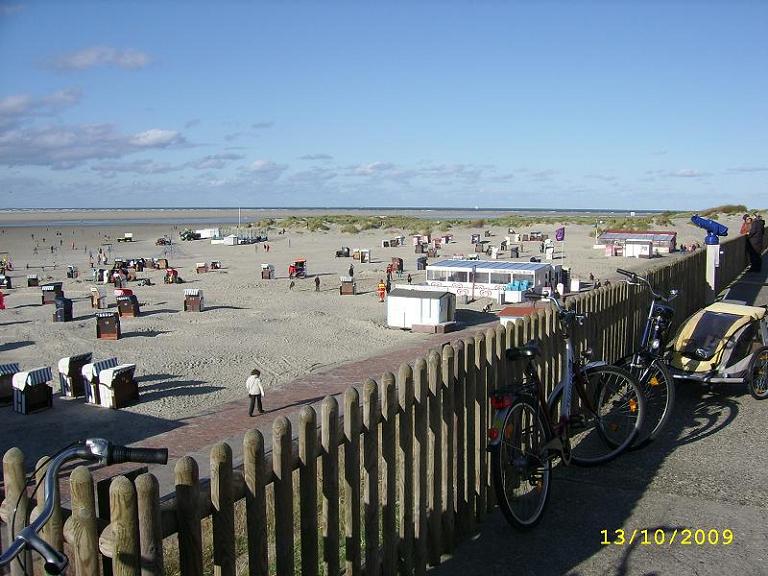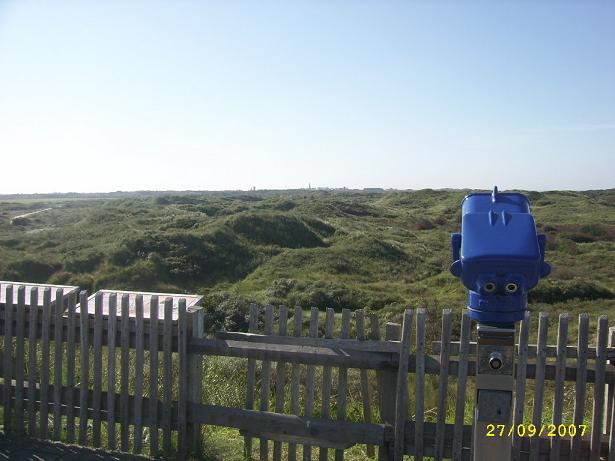Borkum - Insel in der Nordsee
Borkum ist die westlichste und mit 36 qkm größte der sieben Ostfriesischen Inseln in der südlichen Nordsee. Aufgrund des Golfstroms herrscht auf der Insel ein gemäßigtes Klima, im Sommer nicht sehr heiß, im Winter nicht sehr kalt. Die Insel ist durch ihre Hochseelage besonders pollenarm und jodhaltig.

Küstendüne
Dünen formen sich zu Wellen und speichern den Sand, den der vorherrschende Meereswind in das Inland blässt. Dabei wird der Sand vom Meeresstrand herantransportiert. Um das wandern des Sandes zu stoppen, benötigt dieser einen Halt, z.B. Vegetation, Kiesel oder ähnliches. Werden die Sandkörner festgehalten, ist dies der Beginn einer Dünenformation. Der Wind wiederum versucht an der Vorderseite der Düne den Sand abzutragen, um ihn an der Rückseite wieder abzulagern. So wandert die Düne ins Inland. Zum Küstenschutz werden vielfach künstliche Strandbefestigungen errichtet.
Fragen, die zu beantworten sind
1. Welche drei Dinge sind für die Dünenbildung erforderlich?
2. Welche fünf Entwicklungsstufen hat eine Düne vom Strand bis zum feuchten Dünental?
(Antworten siehe Tafeln am Standort)
Bitte macht von euch und eurem GPS ein Foto in Richtung Stadt Borkum (siehe zweites Foto / freiwillig)
Um diesen Cache zu loggen, müsst ihr die Antworten parallel per email an den Owner schicken.

Borkum - Island in the North Sea
Borkum is the westernmost and, at 36 sq km, the largest of the seven East-Frisian islands in the southern North Sea. Due to the Gulf Stream, there is a temperate maritime climate, which means that it is not very hot in summer and not very cold in winter.
Coastal dunes
Dunes form where constructive waves encourage the accumulation of sand, and where prevailing onshore winds blow this sand inland. There need to be obstacles e.g. vegetation, pebbles etc. to trap the moving sand grains. As the sand grains get trapped they start to accumulate, this is the start of dune formation. The wind then starts to affect the mound of sand by eroding sand particles from the windward side and depositing them on the leeward side. Gradually this action causes the dune to "migrate" inland, as it does so it accumulates more and more sand. Dunes provide privacy and shelter from the wind.
Question to answer
1. Which three things are necessary to form a dune?
2. Which five condition has a dune from beach to wet-dune-slack?
(Answer see plates on the site)
Please make a photo of you and your GPS in direction to Borkum City (see 2nd photo / optional)
To log your visit email the answer of the questions.